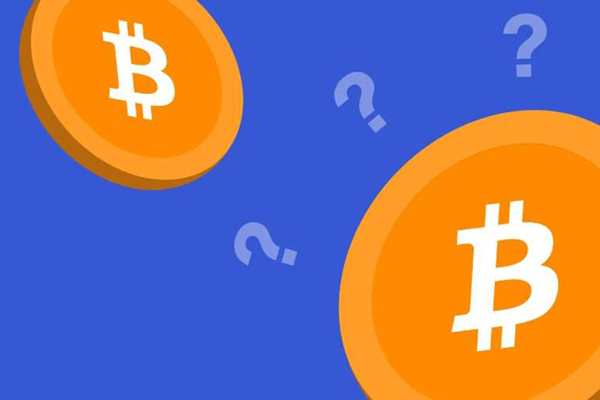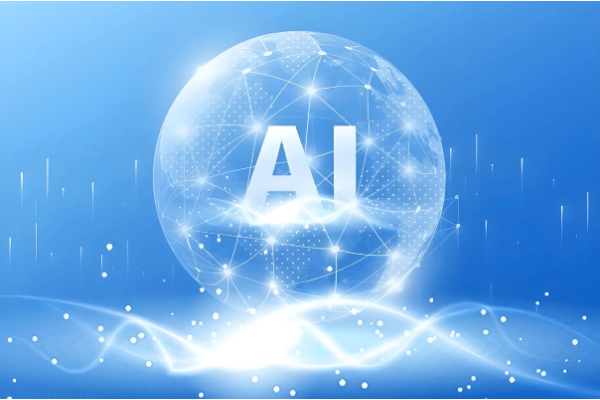In the Age of Populism, Hold On to Your Bitcoin

Maximize your human capital: Get a high-paying job and work hard. Your career is your best hedge against inflation these days.
Shift assets from traditional finance to uncorrelated alternatives. The stock market could remain flat or fall for decades.
Hoard gold for stability and hold Bitcoin for appreciation. Both will outperform in an era of deglobalization and financial repression.
We just had the longest bull run in history, from the ashes of WWII all the way to Donald Trump’s 2024 victory. This epic bull run built generations of passive investors, conditioned them to believe that “nothing will happen” and that “markets can only go up.” Unfortunately, the good times are over, and many are about to get hurt. The structural tailwinds that fueled this decades-long boom are not only stalling, but are reversing dramatically. The populist revolution is here, and it will make labor great again at the expense of capital.
The Populists Are in Charge
The globalist neocon political project ushered in by the Clinton→Bush→Obama→Biden presidencies is officially over. Trump killed it, and its remains will never be resurrected.
By the way, the shift to populism isn’t just happening in the US
There’s a whole new populist political project in the US. Today, Trump has full control of the Republican Party in a way that wasn’t there in 2016. Meanwhile, the Democratic Party is experiencing the kind of intraparty strife that the Republican Party just ended, and you can expect the populists to eventually beat the globalists.
Populist politics is fundamentally different from globalist politics. You need to update your view of the goals of the two parties. There will still be differences between Republicans and Democrats, but they will increasingly converge on the core populist agenda:
The veneration of blue-collar jobs. Both sides are now competing over who loves factory workers more. The days of “learning to code” are over.
Reindustrialization. Everyone wants factories, supply chains, and key industries to return to the US.
Tariffs. Expect the next president, Republican or Democrat, to continue a foreign policy centered on tariffs.
Free trade has become politically toxic.
Nationalism. The distinction between “citizens and noncitizens” is returning with greater force. Both parties will continue to restrict immigration and deport illegal immigrants. The difference will be in scope and speed, not direction.
The elite consensus that drove policy from Reagan to Obama promised prosperity under American leadership through free trade, open capital flows, and globalization. For financiers and tech moguls, this produced stunning results. But for large swaths of the country, especially in its industrial heartland, it has resulted in hollowed-out communities, stagnant wages, and the spread of fentanyl. Populism is not an accident; it is a predictable phenomenon.
The Value of Labor
Two powerful forces are converging to drive wages sharply higher:
Reindustrialization is causing a surge in labor demand. Even with automation, the reshoring of factories and supply chains will create a huge demand for workers. Every new semiconductor plant or electric car battery factory needs engineers, technicians, construction workers, and support staff. The CHIPS Act and the Inflation Reduction Act alone have injected hundreds of billions of dollars of opportunity into domestic manufacturing.
Immigration restrictions are also shrinking the labor supply. Whether through border controls, deportations, or reduced visa approvals, the influx of new workers is being limited. Republicans want to deport all illegal immigrants; Democrats are at least conceding to deporting illegal immigrants with criminal records. Either way, the trend is clear: Fewer workers are entering the job system.
Review the supply and demand curves in economics
This is basic economics: When the demand for labor increases and the supply contracts, wages must rise. This is not a temporary phenomenon, but a structural shift that could last for decades. For the first time in many years, you will see wages rise faster than inflation and financial asset returns.
This is true even in an inflationary environment. I expect inflation to be between 3% and 9% over the next decade, due to deglobalization, tariffs, and labor shortages. But if your wages are rising 5% faster than inflation each year, rising prices won't keep you up at night. You're increasing your real wealth while asset owners watch their portfolios stagnate.
What this means: Now is the time to focus on your career. Work hard and learn valuable skills, especially those related to domestic production and physical infrastructure. Your human capital (your ability to make money) is appreciating. This is a generational opportunity to build wealth through income rather than asset appreciation.
Wall Street is dead
Wall Street was the most important interest group during the US globalist political project. Their interests were seen as equal to the national interest. Free capital flows, deregulation, bailouts when necessary, Wall Street enjoyed it all. It seemed that every Treasury Secretary came directly from Goldman Sachs.
Today, as deglobalization progresses, Wall Street is rapidly falling out of favor at the political and public levels. The financial elites don’t realize it yet, but they no longer have the allies and power they had 5-10 years ago. They are like dinosaurs looking up at a strange bright light in the sky, not understanding that their time is coming to an end.
The idea that the Fed’s shift to rate cuts is inevitable is wrong, and the Fed will not shift
Because Wall Street has not yet recognized its decline in status, they still expect the Fed to save them when they are in trouble. They assume that the famous “Fed put” (the central bank’s implicit promise to cut interest rates to save the market) is still valid. But it is not.
Since 2021, every politician has learned a key lesson: If you are an elected leader and there is inflation in the country, you will lose your reelection campaign. It's that simple. This has completely reversed the political incentives around monetary policy. Savvy politicians are now pressuring the Fed to keep interest rates high because cutting rates risks re-inflation, which will cost them their jobs.
Even as the market plummets, the current political calculation is to prioritize fighting inflation over saving asset prices. Wall Street can cry all it wants, but in a populist environment, their tears will not buy votes. In fact, many voters will cheer Wall Street's setback. This reality has not yet been reflected in market prices.
The Depression of Financial Assets
It's time to stop pretending that the stock market and the real economy are the same thing. You can have your wages and quality of life rise while financial assets and the stock market fall. For people under 30, this is actually the ideal situation, when you finally have the opportunity to use your rising wages to buy homes and stocks at reasonable prices.
You may never see Apple's stock price hit a new record high again
Take Apple as an example. In Q4 2024, Apple has a P/E ratio of about 40 and a gross margin of about 46%. That is, if Apple has revenue of about $100 per share and earnings of about $46 per share, the stock price is about $1960.
Now assume that they have to repatriate production and labor to the US. Their profit margins will compress due to less efficient domestic production. Gross margins fall to 20%, and in a high interest rate environment, the market will no longer recognize such an aggressive P/E ratio, so the P/E ratio falls to 25 (still above the historical average). Assume that over the next decade, since Apple is still a superior company, they manage to double their revenue. By 2035, they have revenue of about $200 per share, but earnings of only $40 per share, and the stock price is $1000.
This is how financial assets can get into a secular bear market (10+ years) while the company is still profitable and giving employees raises. The stock price can actually fall 50% even though business activity is growing and wages are rising.
This is not just a theory, but what really happened in Japan after 1989. That year, the Nikkei hit nearly 40,000 points and then collapsed. Today, 36 years later, it has not fully recovered. If you bought Japanese stocks at the peak and held them for a generation, you would still be losing money in real terms. This is what happens when a financialized economy built on easy money and globalization has to adapt to a new reality.
It is easy for US financial assets to fall into a "lost decade" (or even two decades). Passive investment strategies that worked well for the baby boomers may give dismal returns for the next generation. For index fund believers, this will be nightmare territory.
So who are the losers?
Here is a useful reference on how much the baby boomers have benefited from the globalist political plan
At this point, you may be wondering who will be the unlucky ones in the new political and economic landscape. There are two main groups:
Large companies with high profit margins. Those companies that have enjoyed the dividends of globalization (outsourcing production, optimizing global supply chains, paying very low wages) face painful adjustments. Reshoring means higher costs, scarce labor means higher wages, and tariffs mean higher input costs. All of this compresses their previously sky-high profit margins. They will still make money, but less, and investors will value those reduced profits less.
Baby boomers who are too old to benefit from wage growth. The real victims are retirees and those about to retire, who are asset-rich but income-poor. After decades of policies catering to their interests, the boomer advantage is over. They have exited the labor force, so rising wages don’t help them. Their retirement accounts are heavily invested in stocks and bonds, and those assets may remain stagnant or decline for years. Meanwhile, inflation eats into their fixed incomes. It’s a triple whammy: falling assets, rising costs, and the inability to earn more income.
This isn’t just an economic issue; it’s an intergenerational equity issue. Boomers enjoyed the fruits of the post-World War II boom, bought homes at low prices, watched their stocks rise 10% a year for decades, and then burned their bridges. Now, when they try to cash in on those gains, they’ll find fewer buyers. The massive intergenerational wealth transfer that many expected may not be as bountiful as imagined.
So who are the winners?
Under this new paradigm, the winners are clear:
The labor force, especially blue-collar workers. Electricians, plumbers, welders, mechanics, construction workers, anyone who makes or repairs physical things, stand to gain greatly. These jobs cannot be outsourced, are essential to reindustrialization, and face less competition for labor. For these workers, the era of wage stagnation is over. They will be paid well and have a renewed sense of social status.
Young people entering the workforce. If you are just in your twenties, this shift is in your favor. You will earn higher wages over the course of your career. You will eventually buy assets (housing, stocks) at more reasonable valuations after asset prices have fallen. You have decades of earning money to benefit from the pro-labor environment. This is a much better situation than when you entered the workforce in 2010, when wages were stagnant but assets were already expensive.
People holding uncorrelated assets like Bitcoin and gold. As financial repression grows and traditional assets struggle, alternative assets outside the system become increasingly attractive. Gold has been a classic inflation hedge and safe haven for thousands of years. Central banks around the world are already hoarding gold at a record pace. Bitcoin, as digital gold, offers a similar role with greater upside potential. Both thrive in environments of financial instability, currency debasement, and geopolitical tensions.
Central banks are buying gold in droves
One thing to be clear about Bitcoin: it was created for moments like this, when trust in traditional financial institutions is shaken and governments are taking increasingly desperate measures to manage their debts. Bitcoin’s fixed supply is extremely attractive when everything else is losing value. I expect Bitcoin to eventually reach $1 million, but you’ll need patience. This is not a get-rich-quick trade.
The New Economic Order
We are witnessing a historic turning point: the end of the neoliberal globalist order and the rise of populist nationalism. This is not a minor policy adjustment; it’s a fundamental reshuffling of economic winners and losers.
For decades, capital dominated labor, financial assets outperformed wages, and Wall Street called the shots in Washington. That era is over, and we are entering a period where labor regains influence, wages outpace asset returns, and economic policies prioritize workers over investors.
This transition will not be smooth, markets will experience sharp declines, and inflation will persist longer than most expect. Geopolitical tensions will rise as countries prioritize their own interests over global cooperation.
But amid this turmoil lies opportunity. Focus on learning skills that will earn you high wages in the new economy, and move away from overvalued financial assets toward uncorrelated alternatives. Prepare for a world where paychecks, not portfolios, are the primary vehicle for wealth accumulation.
The populist revolution isn’t just changing politics, it’s rewriting the rules of economics. Those who recognize this shift early and position themselves accordingly will reap the rewards. Those who cling to old strategies will struggle. This is not the end of prosperity, it’s its redistribution.









